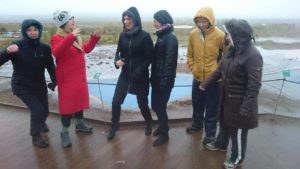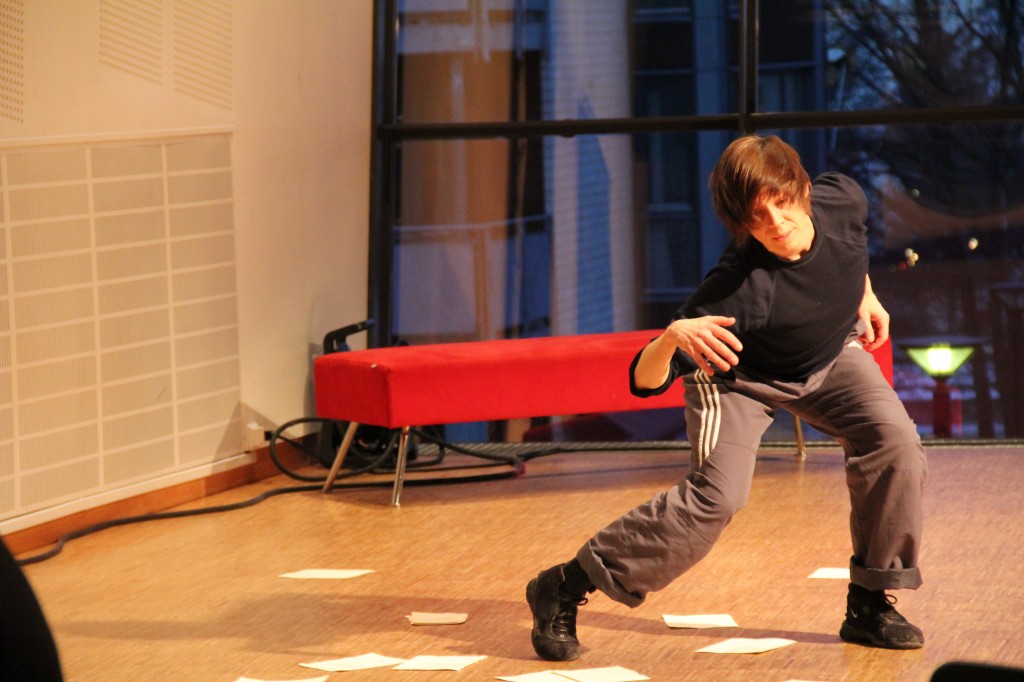About
In September 2015 the Writing Movement Network was established. It continues the activities of the keðja Writing Movement 2012-2015 (description below).
The network is from 2017 manifesting itself as the Writing Movement Network 2.0.
WMN 2.0 supports and develops a community of dance writers across the Nordic-Baltic countries and Belarus. There are very few dance writers, many are quite isolated professionally. The network addresses relevant issues for this group of (often precarious) cultural workers who perform important roles, being the ones that ask questions and reflect on the locally/regionally/nationally produced dance. Adding the international exchange that takes place in the network, the members together inform and develop dance as a cultural field in the Nordic-Baltic region and beyond.
—————————————————————————————————–
The Writing Movement Network activities 2015-2016 happened with the support of/in collaboration with:
- Nordic-Baltic Mobility Programme
- DANCE.LV Journal
- Koidu seltsimaja (Estonia)
- Time to Dance festival (Latvia)
- Saldus Arts School (Latvia)
- Icelandic Dance Company (Iceland)
- State Culture Capital Foundation of Latvia
- Trust for Mutual Understanding
- Movement Research
- Compagnie Ariel
- Derida Dance Center
- Laugarvatn guesthouse
- Viljandi municipality
- Saldus municipality
- Culture Capital of Estonia
- Viljandi Culture Academy
- Viljandi Gymnasium
- Dance Week Festival
- Shopping Mall UKU keskus
- Latvian National Radio
- Letterstedtska Föreningen
- Teaterförbundet
This is a description of the keðja Writing Movement 2012-2015:
Throughout the Nordic and Baltic countries contemporary dance finds a challenge when it comes to articulation of what ideas, aesthetics, values, methods and processes lie behind performance and other expressions of dance.
Artist Cecilie Lindemann Steen in her work demonstration during the Oslo Writing Movement seminar series “Dance, Journalism, Criticism”.
The lack of a continuous critical examination and discussion about dance in its diverse cultural, social and aesthetic context hinders artistic development as well as the fields’ visibility, status and communication with the audience. Simultaneously the traditional role of the dance critic is being challenged by a changing media situation. Dance writing is increasingly becoming an idealistic practice as fees are minimal and publishing opportunities scarce, which makes it difficult to maintain and develop the general discourse as well as the quality in produced texts. ke∂ja Writing Movement is a project that aims to stimulate dance writing and discourse by establishing activities on many levels; by building a network of professionals engaged in dance discourse through the Baltic and Nordic countries, through this network arranging competency raising seminars and workshops, and in the end also developing, translating and exchanging and publishing texts on dance. Writing Movement is one of the strands in the Nordic Baltic ke∂ja 2022-2015 project, otherwise consisting of Wilderness; an artistic residency program, the ke∂ja mentoring program, touring and sustainability think tanks, and three dance encounters in Tallinn, Klaipeda and Mariehamn.
Organisation
The overall coordination of the lab activities, publishing and the network is co-ordinated by Dance Information Norway. The individual 8 labs will be hosted and planned by the local host organisations and managers, (read more under partners in the menu), New Baltic Dance (online journal at www.dance.lt) in Lithuania, Ingrida Gerbutaviciute, Dansbyrån in Sweden, Myriam Mazzoni, Liikekieli (online journal) in Finland, Veera Lamberg, Dance LV Journal (online journal) in Latvia, Inta Balode, Estonian Dance Artists Union, in Estonia, Keiu Virro/Maike Maiste, Iceland Art Academy in Iceland, Sesselja G. Magnusdottir/Sveinbjörg Thórhallsdóttir, Dansehallerne in Denmark, Kamma Siegumfeldt
Activities from Aug 2012 – Jan 2014
Local Labs.
The Labs will explore different ways of looking at and writing about dance, and produce new writing. They will be open for and relevant to professionals like critics, dancers, choreographers, curators, researchers, teachers/pedagogues, arts managers, producers and others that work with dissemination and communication of dance and the performing arts as well as to audiences. Labs will in many cases be linked to dance festivals or other local dance events.
Network building
The network will meet regularly in connection to the local Labs or in the keðja Encounters. The network will exchange experiences from the local labs and work towards stimulating the publication of texts discussing dance, by engaging already existing publication channels like newspapers, academic press, journals, websites and blogs into the project. The network will also reflect on the possibilities and challenges that digital and social media represent towards traditional criticism.
Publication/Documentation
Through a call for articles support for the production of new texts on dance will be provided in the course of the project and be published in relevant channels online and in print. Support for translation of the selected texts in to English will be provided ensuring that the development of terminology in the local languages is stimulated and the texts are provided with the possibility of a longer life span and a wider readership. Proceedings and documentation from the Labs, will be published on the keðja website, and in the websites of local hosts and other associates of the project.
Outcome
– A more reflective, critical and continuous discourse on dance in its various manifestations.
– A Nordic Baltic network of dance writers/thinkers/makers; lasting and strong partnerships for organisations, institutions and individuals in the Nordic and Baltic region.
– Empowerment, skills enhancement and visibility of existing dance writers and dance media.
– Published material, online and in print – for the benefit of professionals as well as audiences

